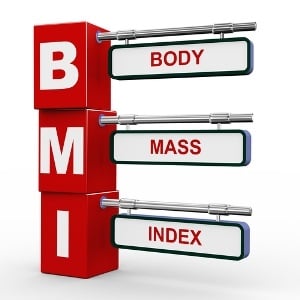
This week’s topic was inspired by a question on the DietDoc Message Board: “How accurate is the BMI?” This question encouraged me to start reading scientific literature to provide an up-to-date answer to this query.
The BMI (Body Mass Index) is widely used as a tool to assess if an individual is overweight or not. However, as the questioner pointed out, some people have a normal BMI and yet their waist circumference measurement is above the normal range, while conversely some people are fit and healthy and yet their BMI exceeds 25, the upper level of normal. The reader also wanted to know if there are more accurate methods of determining overweight or obesity than the BMI.
Calculating the BMI
Let’s first go back to how to calculate the BMI. The standard formula is as follows:
Weight in kilograms divided by height in metres squared (height in metres times height in metres).
Read: Obesity
For example: To calculate the BMI of a woman who is 1.6 m tall and weighs 59 kg, you would use the following equation: 59 ÷ (1.6 x 1.6) = 59 ÷ 2.56 = 23,04. In other words this woman has a BMI value of 23 which falls nicely within the normal range.
The different ranges for the BMI are divided into:
Underweight: less than 18.5
Normal: 18.5 to 24.9
Overweight: 25.0 to 29.9
Obesity, Class I: 30.0 to 34.9
Obesity, Class II: 35.0 to 39.9
Extreme Obesity, Class III: more than 40.0
Why use the BMI?
Mahan and her co-authors admit: “It is possible to be overweight according to BMI standards, but not be overfat or obese. It is also possible to have excessive fatness, and yet not be overweight.” This is an example of why people often challenge the usefulness of the BMI as an accurate measure of fatness.
The BMI is useful to assess fatness particularly when the patient is not sitting in the dietician’s office so that she or he can carry out a variety of other measurements such as:
- Determination of the waist circumference
- Use of a formula (e.g. the Deurenberg formula) to calculate percentage body fat
- Use of devices to measure bioelectrical impedance (this method is popular in gyms)
- Whole body underwater weighing (usually only used in scientific studies)
- Use of radioactive markers to determine body composition (also usually only used in scientific studies)
Determination of the BMI is thus rapid, inexpensive and has a reported accuracy of 88% (Formula Medical, 2015), which is regarded as more than adequate.
Read: BMI can predict heart disease
The public are probably aghast that any measure which does not reach an accuracy of 99.9999% is regarded as good and usable, but it is important to keep in mind when we work with biological systems such as the human body, that we have to deal with a great deal of variation unlike precise formulas used in maths or physics. An accuracy of close to 90% is, therefore, a good indication if someone’s weight falls outside the normal range for height.
When should the BMI not be used?
The BMI should not be used for athletes or pregnant and lactating women, because it will probably overestimate body fatness. In older individuals who have lost a lot of muscle tissue (sarcopenia) or patients suffering from wasting diseases, the BMI will underestimate body fat and other measures such as skinfold thickness readings should rather be used. The same applies to eating disorders associated with wasting like anorexia nervosa.
Experts also discourage the use of the BMI to assess the fatness of persons in Obesity Class III, which is described as “extreme”(values exceeding 40).
Read: Weight and BMI affect fertility
In general, the BMI is not used for children under the age of 18, where age-specific tables are more accurate.
In all cases where the BMI should rather not be used, further measurements should be made by trained and experienced evaluators such as your dietician, biokineticist or medical doctor. The combination of BMI and Waist Circumference, or skinfold measurement, or fat percentage calculations using the Deurenberg formula for example, should be able to determine if a patient is overweight or obese and if her or she is at risk of developing diseases of lifestyle.
An honest look in the mirror may also be valuable both for individuals who are overweight or obese, and those who are suffering from anorexia. If you can’t see yourself or your child realistically, consult a dietician or your medical doctor to help you assess your weight or the weight of your child.
Read more:
New obesity scale better than BMI
Men develop diabetes at lower BMI than women
Diabetes better predictor of death than BMI
References:
- Mahan K L et al (2021). Krause’s Food & the Nutrition Care Process. Elsevier Publishers, USA
- Formula Medical (2015). Formula for Life.
Image: Body Mass Index from Shutterstock




 Publications
Publications
 Partners
Partners










